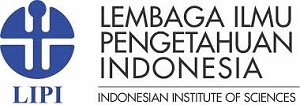PENGARUH USER-GENERATED CONTENT SEBAGAI ALAT KOMUNIKASI BISNIS TERHADAP KREDIBILITAS INFORMASI WEBSITE “TOKOPEDIA”
Abstract
This study aims to determine the effect of User-Generated Content as a Business Communication Tool on the Credibility of 'Tokopedia' Website Information. This is considering, the factor of content creation by other users can influence consumers in making purchasing decisions. Therefore, product content or reviews that are objective, accurate, and relevant to the product posted by other users will make the information look credible to other parties. The theory used for independent variables is the E-WOM theory, and user-generated content is measured by four dimensions of reciprocity, responsiveness, non-verbal information, and response speed. Whereas, the theory for the dependent variable uses the model of adopting information, information credibility is measured by two dimensions namely the quality of the argument and the credibility of the source. The research findings show that user - generated content as a business communication tool has a significant effect on the credibility of the Tokopedia website information. This means that the content or comments made by other users on the Tokopedia website look credible so that other consumers who read them trust the information contained in the comments column. Great Influence of User - Generated Content as a Business Communication Tool Against the Credibility of Tokopedia Website Information, obtained by 0.624 including the category of strong influence. This means that the content or product reviews made by other users on the Tokopedia Website look credible information. The conclusion of the study shows that user - generated content as a business communication tool has a significant effect on the credibility of the Tokopedia website information, and the category of influence is included category strong.
Full Text:
PDFReferences
Babbie, E., William E. Wagner, I., dan Zaino, J. (2015). Adventures in Social Research : Data Analysis Using IBM® SPSS® Statistics (9 ed.). United Kingdom: SAGE Publications, Inc.
Bisen, V., dan Priya. (2009). Business Communication. New Delhi: New Age International (P) Limited.
Bovée, C. L., dan Thill, J. V. (2014). Business Communication Essentials (6 ed.).
Connolly, P. (2007). Quantitative Data Analysis in Education A Critical Introduction Using SPSS. USA and Canada: Routledge.
Das, K., Tamhane, T., Vatterott, B., Wibowo, P., dan Wintels, S. (Agustus 2018). The digital archipelago: How online commerce is driving Indonesia’s economic development. Retrieved from Indonesia:
Durand, M. A., dan Chantler, T. (2014). Principles of Social Research (2 ed.). England: Open University Press, McGraw- Hill Education.
Elliott, A. C., dan Woodward, W. A. (2007). Statistical Analysis Quick Reference Guidebook: With SPSS Examples. Thousand Oaks, California: Sage Publications, Inc.
Field, A. (2009). Discovering statistics using SPSS (and sex and drugs and rock 'n' roll) (3 ed.). London: Sage Publications, Ltd.
Fitrah, M., dan Luthfiyah. (2018). Metodologi Penelitian: Penelitian Kualitatif,
Tindakan Kelas & Studi Kasus. Jawa Barat: Jejak Publiser.
Henn, M., Weinstein, M., dan Foard, N. (2006). A Short Introduction to Social Research (1 ed.). London: SAGE Publications.
Hermawan, A. (2017). Penelitian Bisnis Paradigma Kuantitatif. Jakarta: CV Grasindo.
Kriyantono, R. (2008). Teknik Praktis Riset Komunikasi. Jakarta: CV Kencana.
Sungkono & M. E. P., Trans.). In N. Setyaningsih (Ed.), Buku 2 (10 ed.). Jakarta: Salemba Empat.
Miller, G. J., dan Yang, K. (Eds.). (2008). Handbook of research methods in public administration (2 ed.). United States of America: Auerbach Publications (Taylor & Francis Group).
Muijs, D. (2011). Doing Quantitative Research in Education with SPSS (2 ed.). London: SAGE Publications Ltd.
Peat, J., dan Barton, B. (2014). Medical Statistics : A Guide to SPSS, Data Analysis and Critical Appraisal. West Sussex, UK: John Wiley & Sons, Incorporated.
Pickton, D., dan Broderick, A. (2005). Integrated marketing communications (2 ed.). England: Pearson Education Limited.
Purwanto, D. (2006). Komunikasi Bisnis (3 ed.). Jakarta: Erlangga.
Singh, K. (2007). Quantitative Social Research Methods. New Delhi: Sage Publications India Pvt Ltd.
Solomon, M. R., Marshall, G. W., dan Stuart, E. W. (2012). Marketing : real people, real choices (7 ed.). United States of America: Pearson Education, Inc.
Sugiyono. (2012). Metode Penelitian Administrasi. Bandung: CV Alfabeta.
Sugiyono. (2013). Metode Penelitian Bisnis. Alfabeta. Bandung. Bandung: CV. Alfabeta.
Tench, R., dan Yeomans, L. (2009). Exploring Public Relations (2 ed.). England: Pearson Education Limited.
Varey, R. J. (2002). Marketing Communication: A Critical Introduction (1 ed.). USA and Canada: Routledge.
Weiers, R. M. (2011). Introduction to Business Statistics (7 ed.). USA: South-Western, Cengage Learning.
West, R., dan Turner, L. H. (2009). Pengantar Teori Komunikasi Analisis dan Aplikasi (Buku 1) (N. Setyaningsih, Trans. 3 ed.). Jakarta: Salemba Humanika.
Wong, J. (2010). Internet Marketing For Beginners. Jakarta: PT Elex Media Komputindo.
Zikmund, W. G., dan Babin, B. J. (2007). Exploring Marketing Research (9 ed.). United States of America: Thomson Higher Education/Cengage Learning.
Zikmund W.G., dan Babin, B.J.. (2009).Business Research Methods (with Qualtrics Card) (8 ed.). South-Western: Cengage Learning.
Sumber Jurnal
Bahtar, A. Z., dan Muda, M. (2016). The Impact of User – Generated Content (UGC) on Product Reviews towards Online Purchasing – A Conceptual Framework. Procedia Economics and Finance, 37, 337—342.
Cho, M., Bonn, M. A., dan Kang, S. (2014). Wine attributes, perceived risk and online wine repurchase intention: The cross-level interaction effects of website quality. International Journal of Hospitality Management, 43, 108—120.
Costa e Silva, S., dan Elo, M. (2018). Chapter 9 New Digital Layers of Business Relationships – Experiences from Business-to-business Social Media. 13, 217—241.
Djafarova, E., dan Rushworth, C. (2017). Exploring the credibility of online celebrities' Instagram profiles in influencing the purchase decisions of young female users. Computers in Human Behavior, 68, 1—7.
Dolan, R., Conduit, J., Fahy, J., dan Goodman, S. (2017). Social media: communication strategies, engagement and future research directions. International Journal of Wine Business Research, 29(1), 2—19.
Estrella-Ramón, A., dan Ellis-Chadwick, F. (2017). Do different kinds of user-generated content in online brand communities really work? Online Information Review, 41(7), 954—968.
Flanagin, A. J., dan Metzger, M. J. (2008). Digital Media and Youth: Unparalleled Opportunity and Unprecedented Responsibility. 5—28.
Floyd, K., Freling, R., Alhoqail, S., Cho, H. Y., dan Freling, T. (2014). How Online Product Reviews Affect Retail Sales: A Meta-analysis. Journal of Retailing, 90(2), 217—232.
Haigh, M. M., dan Wigley, S. (2015). Examining the impact of negative, user-generated content on stakeholders. Corporate Communications: An International Journal, 20(1), 63—75.
Khajuria, I., dan Rachna. (2017). Impact of Social Media Brand Communications on Consumer-Based Brand Equity. Indian Journal of Commerce and Management Studies, 8(3), 124—131.
Lin, H.-F. (2007). The Impact of Website Quality Dimensions on Customer Satisfaction in the B2C E-commerce Context. Total Quality Management, 18(4), 363—378.
Mei Cao, Q. Z., dan Seydel, J. (2005). B2C e-commerce web site quality: an empirical examination. Industrial Management & Data Systems, 105(5), 645—661.
Mohtaramzadeh, M., Ramayah, T., dan Jun-Hwa, C. (2017). B2B E-Commerce Adoption in Iranian Manufacturing Companies: Analyzing the Moderating Role of Organizational Culture. International Journal of Human– Computer Interaction, 1—19.
Schivinski, B., dan Dabrowski, D. (2016). The effect of social media communication on consumer perceptions of brands. Journal of Marketing Communications, 22(2), 189—214.
Website
ASEAN. (2018). Top 10 e-commerce sites in Indonesia in 2018, by monthly traffic (in million clicks). Retrieved from https://www-statista-com
McKinsey. (2018). Number of online shoppers in Indonesia in 2017 and 2022 (in millions). Retrieved from https://www-statista-com
Richter, F. (2016). How Social Media Influences Shopping Behavior: The Great Influencer. Retrieved from https://www.statista.com/chart/6912/social-media-shopping-influence/
DOI: http://dx.doi.org/10.33376/is.v1i1.347
Refbacks
- There are currently no refbacks.







